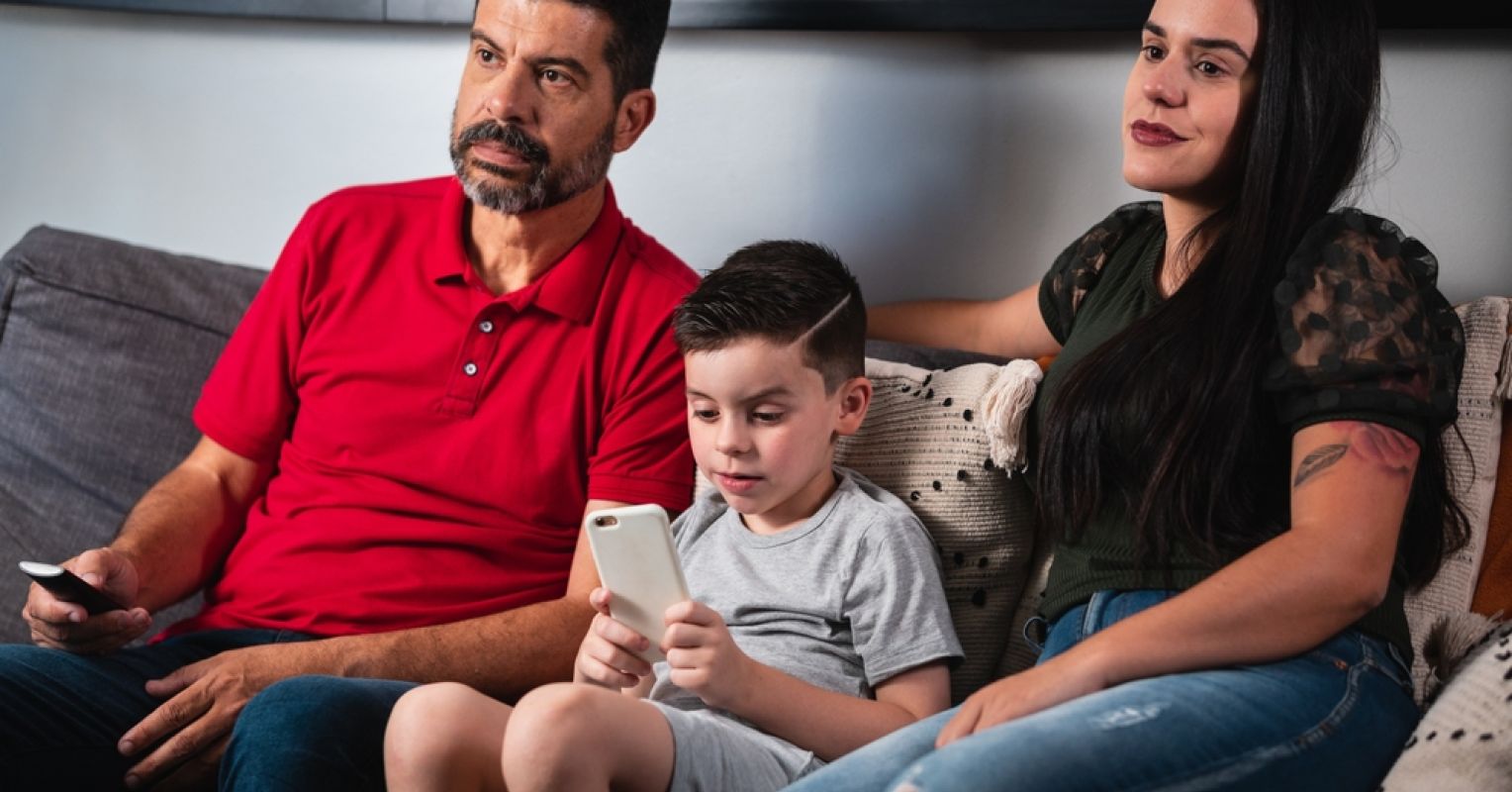A few weeks ago, I shared research from the University of South Florida suggesting that smartphone use might not be the monster under the bed when it comes to teen well-being (Martin et al., 2025). The study findings showed that smartphone ownership actually had a positive correlation with kids’ Mental health. Many other factors were part of the story, but I thought it was an interesting “top-line” finding given the many social media and Mental health conversations that are currently dominated by doom.
Comments to the post poured in. Talk about killing the messenger! Some were accusatory, others outright dismissive. But one response stood out: “You just need to watch Adolescence. That show tells you everything you need to know.”
I was surprised, but probably shouldn’t have been. Since its release, Adolescence has been shared, discussed, and referenced by parent groups and policymakers alike. It’s a fictional show. But its impact? Deeply real. The brain doesn’t easily separate dramatized experiences from real-life emotions because the feelings in both are genuine. We can recognize that a show is fiction, yet it can still shift our perspective. When something feels true, it becomes an integral part of how we understand the world, whether it is real or not.
We shouldn’t scoff at the use of popular media as evidence. The truth is, we’re wired for story. However, as the media becomes more sophisticated, persuasive, and less transparent, we need to recognize our innate vulnerabilities to storytelling and start asking better questions because there is a cost to letting unquestioned stories dictate our decisions.
How a Story Becomes a Belief
Adolescence is a gripping Netflix limited series that follows 13-year-old Jamie Miller, arrested for murdering a classmate. The series is visually compelling. Its realism is enhanced by the excellent acting and single-camera, continuous-shot production techniques that make it feel like a real-time crime drama as it explores the impact on Jamie and his family, as well as masculinity, online radicalization, and the challenges of parenting. However, it is not a documentary. It was inspired by two disparate but frightening phenomena: an increase in juvenile knife crimes in the U.K. and the rising influence of “manosphere” personalities. Yet parents across the globe share it as if it were a series of real events.
Cognitive psychologist Jerome Bruner (1986) argued that humans think in two modes: paradigmatic (logical/scientific) and narrative. Logic helps us analyze, but narrative makes us feel. Narrative also provides a chronological structure for understanding intentions and emotions, as well as organizing cause-and-effect relationships in daily life. Fictional stories that reflect real concerns—like parenting in the digital age—bypass rational skepticism. We don’t just watch them; we experience them.
Immersion Makes Fiction Stick
Narrative transportation is the sensation of being fully immersed in a story (Green & Brock, 2000). This sense of immersion diminishes our critical thinking through our “willing suspension of disbelief,” reducing the likelihood of counter-arguing or resisting persuasive messages. The more emotionally engaging the story, the more we are transported, the more susceptible we are to the story’s message, and the more it feels true. When Adolescence shows a teen unraveling from social media pressure, parents see their fears visualized.
From Screen to Policy
The implications can be very real. Parents react by restricting their children’s tech use based on anecdotal experiences and media narratives highlighting online risks. Advocacy groups use media narratives to lobby for stricter social media regulations. Online platforms amplify sensational stories, unrealistic portrayals, and misinformation.
Critical thinking is in short supply when fear diverts resources from our prefrontal cortex to our amygdala (Clark, 1995). When we witness intense scenes, such as a teenager spiraling out of control online, our fear is activated, tagging the moment with emotional weight and creating “somatic markers” that guide future decisions. The more vivid and believable an example, the more we think it represents reality. Repetitive coverage, sensational events, and our tendency to seek information that reinforces our beliefs all contribute to our tendency to assume a problem is widespread.
The extremes presented in Adolescence aren’t the norm. A review of existing studies found that severe negative outcomes were rare (Odgers & Jensen, 2020), with many adolescents reporting neutral or positive experiences online. And while these findings suggest a nuanced relationship between technology use and Mental health, fear doesn’t lend itself to nuance.
Metaphors Speak Louder Than Facts
Programs like Adolescence aren’t just emotionally effective; they’re symbolically rich. Media content and structure are full of both subtle and overt metaphors that efficiently convey a large amount of information by linking with the existing mental models and emotions stored in our brains, creating new and sticky metaphors and cognitive shortcuts. From camera angles to concrete images, metaphors can translate abstract concepts, such as digital pressure, into vivid, concrete images, like drowning, thereby enhancing memory and framing meaning. The docudrama The Social Dilemma was full of metaphors that framed social-media use as dangerous, such as a teen hanging from meat hooks; AI as manipulative, agentic avatars reveling in their powers and intentionally triggering notifications; and phones depicted as dopamine-activating slot machines.
When Stories Stand in for Evidence
When storytelling mirrors a parent’s biggest fears, the metaphors become truth-adjacent—emotionally real, even if not factually so. Psychologist Donald Polkinghorne (1988) defined this as “narrative knowing,” which prioritizes coherence and plausibility over verification. When someone cites Adolescence as evidence, it is a way of expressing emotional and social truth. It does not necessarily reveal any confusion between fact and fiction. However, high production values, natural dialogue, and emotional resonance create perceived realism, making fiction feel “more real” than fact.
Why This Matters Now
We shouldn’t be surprised when popular media is presented as evidence. We’re storytelling animals. Stories create meaning, give form to fear, and clarity to confusion. They help us talk about hard things. However, as media content becomes increasingly emotionally charged, realistic, and immersive, we must recognize our susceptibility to narrative persuasion.
When narratives drive decisions about parenting, education, or public policy, we need to hold those stories up to the light and ask better questions, going beyond simply asking, “Is this true?” We also need to ask, “Why does this feel true to me?” If we don’t, we’re vulnerable to those who tell stories to influence our behavior and manipulate our beliefs.













